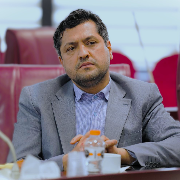1. Background
Arba’een is a significant Islamic ceremony marking the fortieth day after the martyrdom of Imam Hussein (AS), observed on the 20th of Safar in the Islamic lunar calendar. It is one of the largest global gatherings, with millions of participants from diverse backgrounds undertaking a pilgrimage from Karbala to Najaf in Iraq, covering a distance of eighty kilometers. The event attracts people from all walks of life, including professionals, scientists, and individuals of all ages, including non-Muslims. Given the long distance, adverse weather conditions, and health vulnerabilities of participants, it is crucial for healthcare providers to evaluate the process and enhance preventive measures to reduce casualties and improve overall safety (1-3).
2. Challenges
The 2019 Arba’een pilgrimage saw a significant increase in participants, with over 18 million pilgrims reported (4, 5). Common health issues included musculoskeletal disorders, heat-related ailments, respiratory problems, and colds (3, 5). Recent climate changes have shifted weather patterns from cold to hot, impacting the pilgrimage experience (6). With the rising number of pilgrims, there is an urgent need for infrastructural improvements to ensure the safety and well-being of attendees. Future pilgrimages are likely to face adverse weather conditions that will affect vulnerable groups, including the elderly, children, and those with disabilities. Additionally, climate change may influence the types of diseases encountered (7-9).
3. Conclusions
To address the challenges posed by the growing scale of the Arba’een pilgrimage, it is essential for municipal and city officials to upgrade infrastructure and expand capacity. International organizations, particularly the Red Crescent and other NGOs, should enhance public awareness campaigns to improve overall preparedness. Effective measures include developing sewage and drainage systems, improving footpaths, and providing health education. Public education on self-care practices, such as proper backpack use, staying hydrated, and maintaining personal hygiene, is crucial in mitigating health issues. Coordination among stakeholders and government entities is necessary for successful implementation. Furthermore, given current infrastructure limitations, it may be advisable for some vulnerable individuals to avoid participation during Arba’een.

